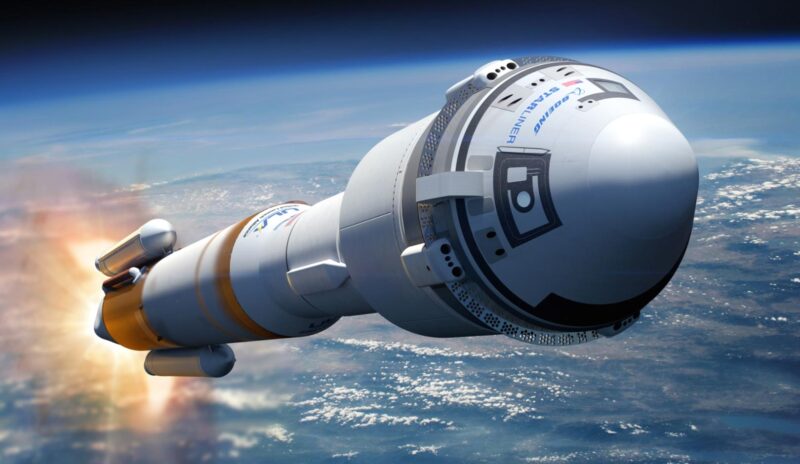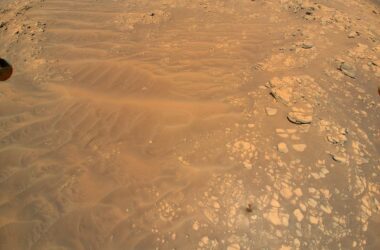
Le Boeing Starliner. Crédit : Boeing
Le mercredi 4 mai, le vaisseau spatial CST-100 Starliner de Boeing a été associé à la fusée Atlas V de United Launch Alliance (ULA) qui le lancera en direction de l’espace. Station spatiale internationale pour un essai en vol sans équipage pour ;” data-gt-translate-attributes=”[{” attribute=””>NASA’s Commercial Crew Program.

Boeing’s CST-100 Starliner spacecraft rolls out from the company’s Commercial Crew and Cargo Processing Facility at NASA’s Kennedy Space Center in Florida on May 4, 2022, on its way to Space Launch Complex-41 at Cape Canaveral Space Force Station. Credit: NASA/Glenn Benson
During the operation, Starliner rolled out of the Commercial Crew and Cargo Processing Facility (C3PF) at NASA’s Kennedy Space Center in Florida and made its way to Space Launch Complex-41 (SLC-41) at Cape Canaveral Space Force Station in preparation for the company’s second uncrewed Orbital Flight Test (OFT-2)

United Launch Alliance’s Atlas V rocket and Boeing’s CST-100 Starliner spacecraft are fully assembled in preparation for an integrated systems test. Credit: NASA/Glenn Benson
Starliner was raised and carefully placed onto the rocket and now is fully assembled and ready for an integrated systems test, a tip-to-tail electrical check of the 172-foot-tall Atlas V and Starliner stack.
OFT-2 is scheduled to launch Thursday, May 19, to demonstrate the system’s human transportation capabilities.
About 24 hours after launch, Starliner will rendezvous and dock to the space station and then return to Earth five to 10 days later. The test is the last flight before the Starliner system launches American astronauts on the Crew Flight Test (CFT) to the microgravity laboratory – the spacecraft’s first flight test with a crew on board. Potential launch windows for CFT are under review and will be determined after a safe and successful OFT-2.
The Boeing CST-100 Starliner is a class of two partially reusable spacecraft designed to ferry astronauts to the International Space Station (ISS) and other low-Earth orbit destinations. It is manufactured by Boeing for its participation in NASA’s Commercial Crew Program (CCP). The spacecraft consists of a reusable crew capsule and an expendable service module.
The capsule has a diameter of 4.56 m (15.0 ft), which is slightly larger than the Apollo command module and SpaceX Dragon 2, but smaller than the Orion capsule. It holds a crew of up to seven people and is designed to be able to remain docked to ISS for up to seven months and to be reused for up to ten missions.



![2021 a été une année incroyable pour la NASA : atterrissage sur Mars, premier vol, Artemis, etc. [Video]](https://7zine.com/wp-content/uploads/2021/12/1640539965_2021-a-ete-une-annee-incroyable-pour-la-NASA-atterrissage-380x250.jpg)